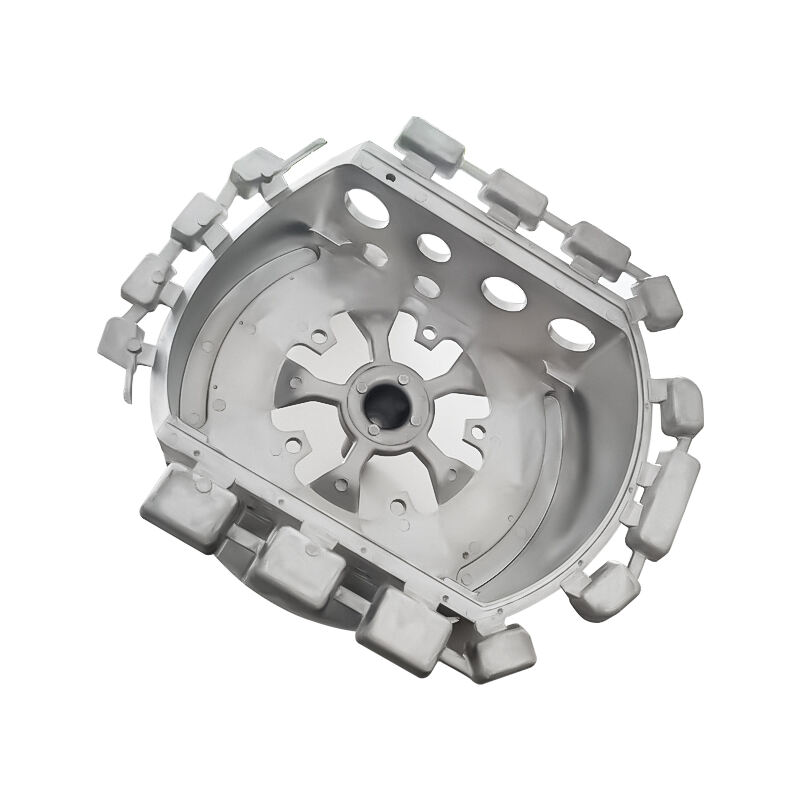Введение
Пользовательский штамп Кастинг является процессом обработки металлов, который требует квалифицированных специалистов для производства прецизионных компонентов, используемых в таких областях, как автомобильный и пассажирский транспорт. Очень важно, чтобы эти детали были прочными и чрезвычайно долговечными, чтобы они могли долго служить и обеспечивать хорошую производительность. Свойства литья под давлением можно улучшить с помощью термообработки, выбора подходящего материала и методов постобработки. В этой статье мы углубимся в эти процессы, чтобы объяснить, как они могут значительно улучшить механические свойства литья под давлением.
Как ранее упоминалось, термическая обработка значительно влияет на свойства титана
Термическая обработка изменяет физические и механические свойства металла, что делает термообработку одной из самых важных операций в металлургии. Термообработка значительно повышает прочность и вязкость литых изделий. Контролируемый цикл определяется как нагрев, выдерживание и охлаждение, специально установленные для частичного или полного преобразования кристаллической фазы с целью повышения твердости и предела прочности за счет улучшения микроструктуры, одновременно устраняя внутренние напряжения.
Например, отжиг уменьшает твердость и напряжение, окисление делает материал более подходящим для обработки. Во время термической обработки растворения несколько фаз внутри сплава растворяются, которые затем выпадают в виде осадка через старение, обеспечивая более однородную структуру с улучшенными механическими свойствами. Тонкая кристаллизация в микроструктуре при старении или упрочнении за счет выделения после термической обработки растворения значительно увеличивает прочность без значительной потери вязкости.
Ключ к созданию прочности и долговечности
Выбор материала для литья под давлением явно важен, так как он формирует основу для прочности, пластичности и т. д. Часто используются такие материалы для литья под давлением, как алюминий, цинк и магний, а медные сплавы обеспечивают выборочное применение (PDO134). Легкие свойства в сочетании с их готовыми возможностями. и коррозионная стойкость сделали алюминиевые сплавы идеальным выбором для применения в автомобилестроении и аэрокосмической отрасли, где обязательны строгие сокращения веса. Цинк: Отличная размерная стабильность, хорошая стабильность и легкость обработки для автомобильных деталей или электропродукции, а также заводов потребительской продукции. Материал Мягкие магниевые сплавы Высокая прочность, жесткость и ударная вязкость Низкая плотность для легких компонентов применения Светлый вес легких Mg деталей
Услуги после литья: Улучшенные и защищенные литые изделия
Прочность литых деталей в основном определяется термической обработкой и выбором материала, однако методы послелитейной обработки могут улучшить литые изделия (более прочные, долговечные). Механическая обработка — после литья, литые изделия можно обработать с определенными допусками, что обеспечивает правильную посадку и упрощает процессы сборки. Это позволяет контролировать размеры точнее, чем это позволяют другие методы обработки металла, поэтому детали будут функционировать как указано при интеграции в конечный компонент/решение. Аниодирование, гальваническое покрытие или окраска защищают литые детали от коррозии и износа, увеличивая их срок службы.
Другая важная операция после послепроцессной обработки — это контроль качества, где можно всесторонне проверить работу каждого компонента в рабочем процессе SLA. Необходимо провести несколько процессов инспекции и испытаний, таких как размерные тесты или неразрушающий контроль, чтобы гарантировать, что каждая деталь литья под давлением соответствует стандартам качества. И именно это делает их более надежными и долговечными, что, в свою очередь, обеспечивает силовое равновесие компонентов, позволяя им функционировать без проблем при всех испытаниях, с которыми может столкнуться их конструкция.
Заключение
При использовании процесса термической обработки, а также выбора правильных материалов на этапе формирования и постобработки, можно получить очень прочные и долговечные изделия литья под давлением. Это позволяет производителям создавать отливки, соответствующие высоким требованиям различных отраслей промышленности. От высокоскоростных требований автомобильной промышленности до условий давления и нагрузки в авиакосмических приложениях, описанные выше процессы повышения производительности обеспечивают более эффективные и надежные изделия литья под давлением без постоянных поломок для длительного срока службы.

